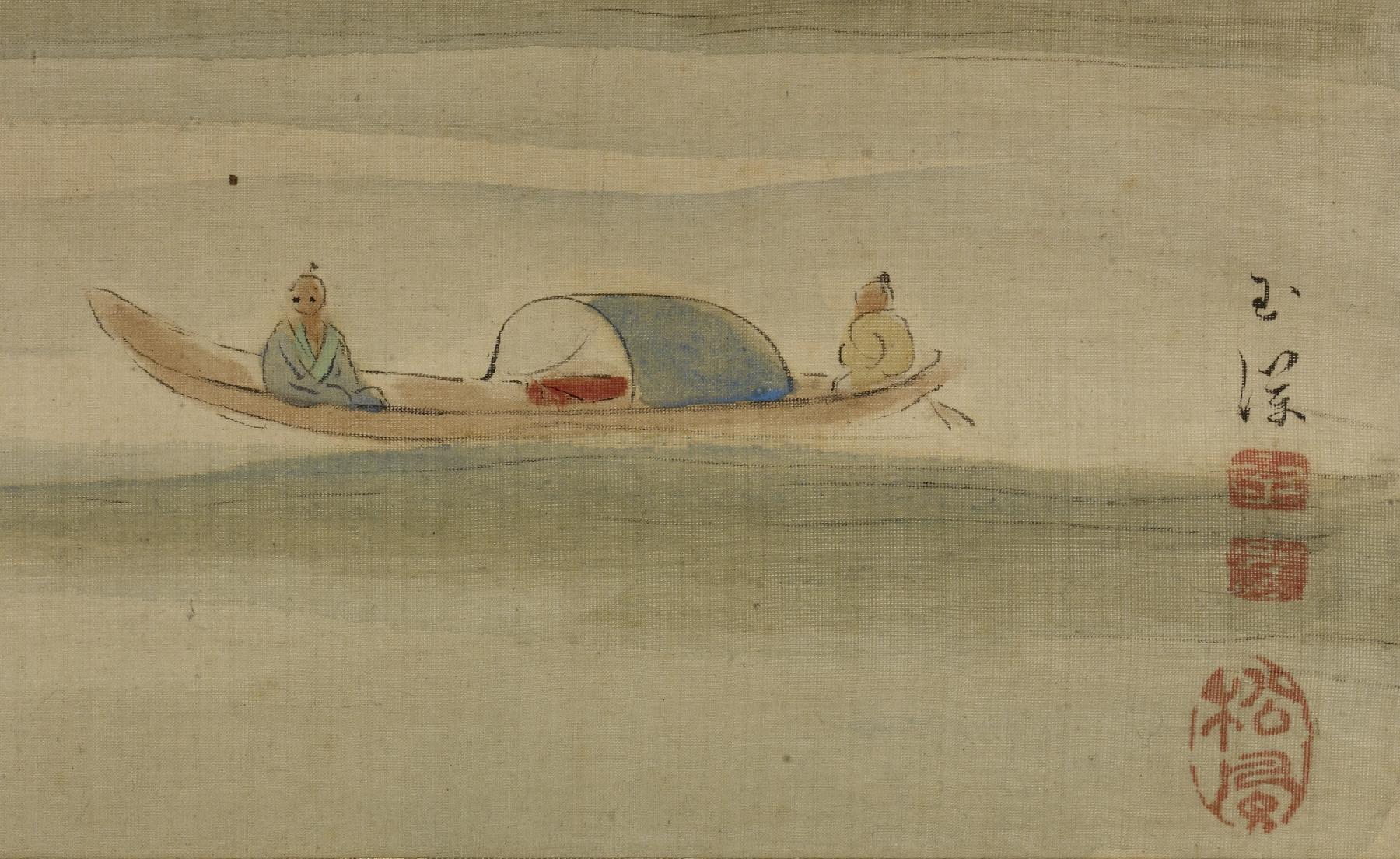Landscape
(Japan and Korea )
This landscape forms a pair with a similar work created by the artist's husband (Walters 35.311).
In the history of Japanese painting there were few famous couples who pursued artistic careers in tandem, and none were as intimately connected and mutually supportive as Ike Taiga (1723–1776) and Ike Gyokuran (1727–1784). Each artist had a distinctive style, and each achieved success and fame as a member of the literati community. Taiga was perhaps the leading painter in Kyoto in terms of patronage during the mid-eighteenth century. His works reached the highest levels and can today be found in temples, private collections, and public institutions across Japan. Gyokuran was not quite as successful in the sense of reaching a wide audience of patrons, but her paintings have a distinct character that is reflective of her gentle handling of the brush and control of color in her powerful landscapes.
Paintings by both artists are found widely, and we do see sets of paintings presented as though they were made to be a pair, but it is rare to find pairs of landscape paintings that were actually made to be presented together. These would have been made for a common patron or purchased from among the studio stock that the two artists kept on hand. They share a common palette and compositionally react to one another through a subtle lean toward the center. The subjects are two boatmen in a watery landscape in this painting and a sage and attendant walking in the mountains from Taiga. Each painting is immediately representative of the mature style of each of these artists, and the subject matter accords with the yin and yang/male and female traditions that they learned from Chinese tradition. The handling of the brush is easy to distinguish, but each artist has made concessions to the other in order to achieve their aesthetic goals as a pair. Japanese traditions have long shown a patriarchal favoritism, and as a result many women artists have had to choose to leave their artistic careers or to take a distinct masculine stance in order to compete in the marketplace. Gyokuran and Taiga are the exception to this pattern.
Provenance
Provenance (from the French provenir, 'to come from/forth') is the chronology of the ownership, custody, or location of a historical object. Learn more about provenance at the Walters.
Matsumoto Kikuo, Kyoto, Japan, before 2007; acquired by James Freeman, Bangkok, Thailand, 2007; purchased by Walters Art Museum, 2013.
Geographies
Japan, Kyoto (Place of Origin)
Measurements
H: 66 5/8 × W with knobs: 19 13/16 in. (169.3 × 50.3 cm); Image H: 38 9/16 × 11 3/4 in. (98 × 29.9 cm)
Credit Line
Museum purchase by exchange, 2013
Location in Museum
Not on view
Accession Number
In libraries, galleries, museums, and archives, an accession number is a unique identifier assigned to each object in the collection.
In libraries, galleries, museums, and archives, an accession number is a unique identifier assigned to each object in the collection.
35.312







